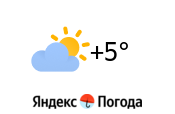Метеорный поток Дракониды, пик активности которого пришелся на минувшую ночь, не обманул ожиданий астрономов - количество "падающих звезд" в максимуме достигло 800 в час, сообщает сайт сети видеонаблюдений за метеорами Международной метеорной организации.
Метеоры возникают, когда в атмосферу входят и там сгорают микроскопические частицы пыли. Потоки метеоров или звездные дожди связаны с прохождением Земли через скопления пыли, которые оставляют за собой кометы. Свое название поток Дракониды получил в связи с тем, что с точки зрения земного наблюдателя падающие звезды летят из созвездия Дракона. Его "родительницей" является комета Джакобини-Циннера (21P/Giacobini-Zinner), открытая в 1900 году.
По прогнозам астрономов, в этом году поток Дракониды должен был превратиться в настоящий "звездный шторм", как это уже происходило с этим потоком в 1933 и 1946 годах. Тогда на небе наблюдалось до 10 тысяч метеоров в час.
Так, по оценкам группы под руководством Жереми Вобайона (Jeremie Vaubaillon) из парижского Института небесной механики число метеоров на пике должно было достичь примерно 600 в час. Специалисты Центра имени Маршалла НАСА Уильям Кук (William Cooke) и Даниэлла Мозер (Danielle Moser) предрекали, что пик активности Драконид придется на 19.52 по Гринвичу, и в этот момент будет наблюдаться около 750 метеоров в час.
Результаты наблюдений, которые опубликованы на сайте IMOnet.org, показали, что пик активности Драконид был достигнут от 20.00 до 20.30 по Гринвичу и максимальное значение показателя в этот ZHR колебалось от 400 до 700-800. Показатель ZHR (зенитное часовое число) представляет собой число метеоров в час, которые были бы видны в идеальных условиях - в частности, если бы радиант метеорного потока находился бы точно в зените.















Статус: |
Группа: Гости
публикаций 0
комментариев 0
Рейтинг поста:
HUNTER'S MOON: There's a full Moon tonight and according to folklore it has a special name--the Hunter's Moon. It gets its name from Native American hunters who tracked and killed their prey by autumn moonlight, stockpiling food for the winter ahead. This year's Hunter's Moon is beautifully close to the planet Jupiter. [sky maps: Oct. 11, 12, 13]
DRACONID METEOR BALLOON: During the peak of the Draconid meteor shower on Oct. 8th, a group of students in Bishop, California, flew a helium balloon to the stratosphere to try to record some Draconid fireballs in the darkness at high-altitude. Five cameras recorded more than 50 GB of data, which the team is sifting through now for evidence of meteors. While we're waiting for the meteor count, the team offers this video of the balloon popping about 100,000 feet above Earth:
Video: realtime, slow motion. Credit: Earth to Sky, copyright 2011, all rights reserved
Note the ghostly halo around the center of the exploding balloon. That's probably the fine talcum-like powder added by the manufacturer to keep the balloon from sticking to itself. Here is the explosion again in slow motion. Be sure to turn up the volume to hear the sound of the balloon popping. The delay proves that light is faster than sound even in the stratosphere.
The balloon pops by design when it reaches the apex of the flight. Immediately, the payload plummets Earthward, falling several hundred mph through the vanishingly thin air of the stratosphere. To arrest the fall, a parachute opens and delivers the payload gently to Earth about 25 minutes later. The Draconid payload landed in the rugged but beautiful Inyo mountains of central California where it was recovered by the team on Oct. 9th.
more images: Owens River, Snowy Sierras, Pop 1, Pop 2
DRACONID BOREALIS: The Draconid outburst of Oct. 8th sent more than 400 meteors per hour shooting out of the high-northern constellation Draco. With visibility favoring the countries of the Arctic, it is no surprise that many photographers caught Draconids cutting through the Northern Lights. Antony Spencer sends this example from Kiruna, Sweden:
"I was leading a workshop to teach students how to photograph the aurora borealis," says Spencer. "We had a blast photographing incredible auroras from dusk to dawn, with plenty of Draconid meteors thrown in as well. What a spectacle! It was a night I will always remember. I was dancing around when I saw I had captured the meteor near the center of the corona (shown above)."
more images: from Hans Schremmer of Porjus/Schweden; from Ed Stockard of Summit Station, Greenland; from Ulf Jonsson of Gussö, Sweden; from Gary Newman of Kiruna, Sweden; from Paul Mohan of Northville, Michigan; from Miguel Claro of Setúbal, Portugal; from Ricardo ML Alves da Silva of Guincho beach, Portugal; from Jesper Grønne of Silkeborg Denmark; from John Chumack of Dayton, Ohio; from Antonio Finazzi of Bettola (PC) - Italy; from Frank Olsen of Tromsø, Norway
Статус:
Группа: Посетители
публикаций 0
комментариев 1269
Рейтинг поста:
чет вчера ни одного не увидел
--------------------